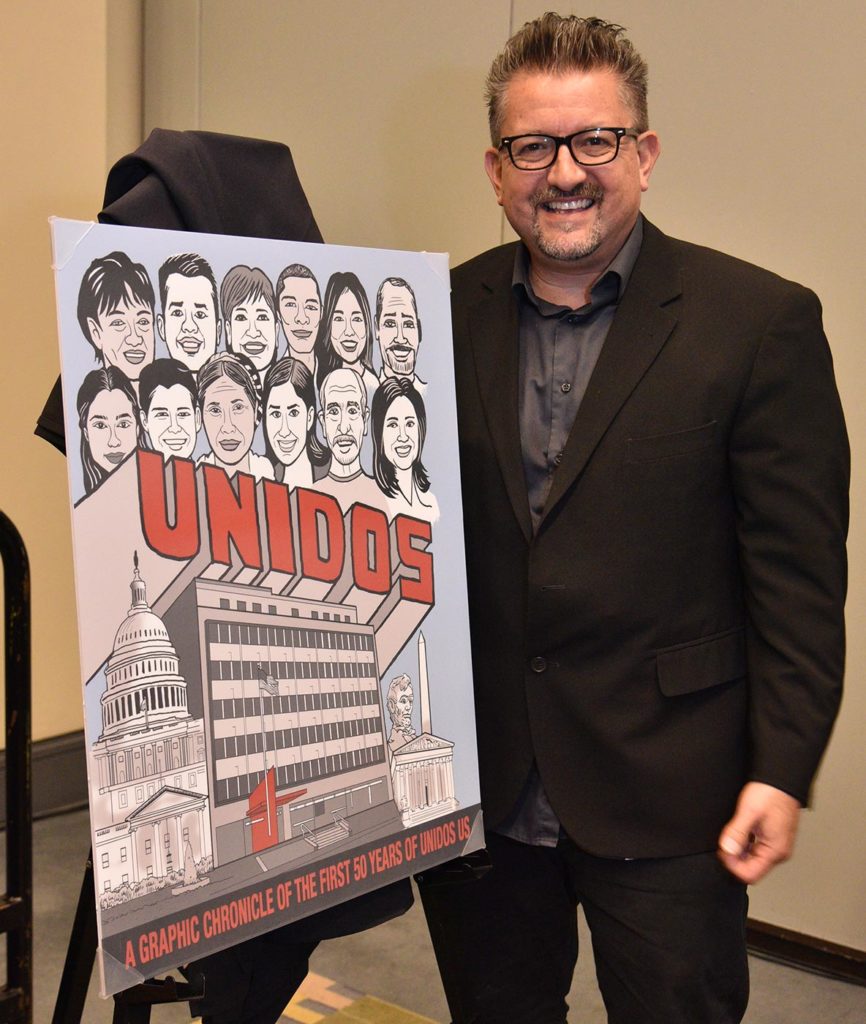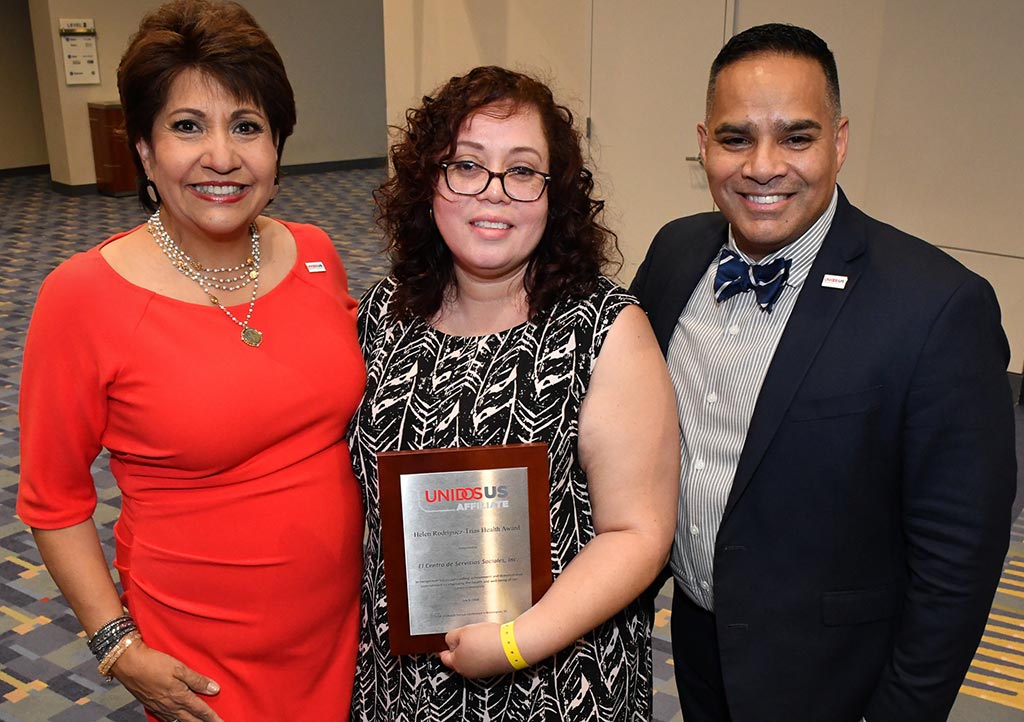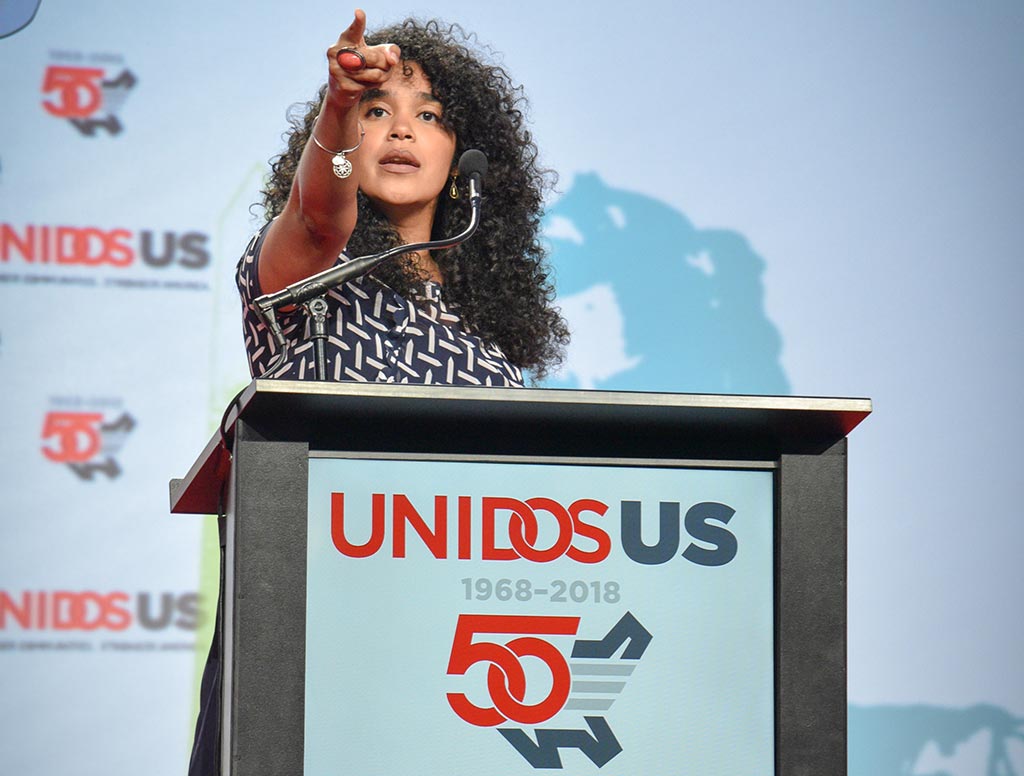How Latinx creators are breaking barriers in Hollywood and beyond
Nationally syndicated cartoonist Lalo Alcaraz visited a Napa Valley middle school recently, where he talked about his career and showed students—most of whom were Mexican—dozens of his political cartoons about President Trump. When their white principal came on stage and asked Alcaraz to move on from the “political stuff,” the popular Latino creator had a succinct response: “Political stuff is what I do.”

After his presentation at the school, Alcaraz talked to a friend who was watching from the back of the assembly room. “That was amazing,” his friend said. “Those kids have never seen anyone on their side before.”
At a time when representation matters maybe more than ever, there are creators in Hollywood and across the creative community breaking the barriers that have kept far too many people from sharing their stories.
Keep up with the latest from UnidosUS
Sign up for the weekly UnidosUS Action Network newsletter delivered every Thursday.
Some of these Latinx creators took part in a panel discussion on representation in Holly wood at the 2018 UnidosUS Annual Conference in Washington.
THE LATINO LIST
There are more Latino stories being told on television and in film than there have been for decades, but it’s still not enough compared to how many Latinos live in the United States. As Manuel Betancourt from Remezcla points out in a video with Gina Rodriguez, only 5.8% of speaking roles are portrayed by a Latino, but there are more than 55 million Latinos in the country.
A common excuse for this lack of representation is that studios don’t know where to find Latino talent, or that the talent doesn’t exist. But there are two women who have proven them decidedly wrong.
Ingrid Duran and Catherine Pino are co-founders of D&P Creative Strategies and creators of the Latino List, a series of documentaries profiling prominent Latinos in entertainment. They were inspired to develop the content in response to the scapegoating of Latinos in Arizona.
“It was during the era of SB1070 in Arizona [when it was passed in 2010, this was the broadest and strictest anti-immigration bill],” Duran said. “The vitriol in the media against our community was horrendous. It was powerful to have our community telling our story for us, and for other people.”
“The fact is that our stories haven’t been told. There is a certain blind spot that non-Latino producers have, they’re just missing those great stories.” – workshop on Breaking Barriers with entertainers @laloalcaraz, Ingrid Duran, @bernardoruizcom and @cmgpino #UnidosUS18 pic.twitter.com/EJr7md37kS
— UnidosUS (@WeAreUnidosUS) July 8, 2018
The Latino List also placed heavy emphasis on intersectionality to show the diversity of stories within the Latino community. “We also wanted to bridge the gap between Latino and LGBT communities,” Pino said. “To tell positive stories from both communities.” Pino and Duran later produced The Out List and The Trans List.
HBO had already seen that the format worked with several volumes of The Black List, but it was still a fight to get funding. “We had to do some of our own fundraising because HBO wouldn’t fund as much as they did for Black List,” Pino said.
“We had to convince HBO that there was an audience. Not everyone in our community has HBO. But we’re a growing and young community. [The list] would resonate with us and with other viewers,” Duran added.
SUDDENLY WE’RE POPULAR
With the Trump administration’s war on Latinos and immigrants, the media and other storytellers are suddenly interested in what challenges Latinx people face every day. Documentarian Bernardo Ruiz brought the conversation to the coverage of the crisis of family separation at the border. “Media companies are scrambling to tell immigration stories,” he said. “But they don’t have the staff who know how to do it right.”
At best, moves like this are just out of ignorance. At worst, they’re exploitative. “It’s possible they’re just capitalizing off of a horrible moment,” Ruiz said. “This is a good time for advocates to push a pipeline of new Latinx journalists and makers to tell the story right, to not be exploitative.”
Especial Announcement: I am illustrating the history of the Southwest Council of La Raza/NCLR/UnidosUS for the 50th anniversary of the civil rights group in a graphic chronicle book https://t.co/aErsnxC2uq
— Mexican Judge (@laloalcaraz) July 9, 2018
SPECIFICITY EQUALS UNIVERSALITY
Despite the challenges, each of the panelists have broken through barriers and know it’s possible for any aspiring creator. It may be even easier now, thanks to the internet and more commitments to better representation of minorities.
“A lot of people want to generalize, but you have to be as specific in your story as possible,” Ruiz said. “There’s nothing worse than a bland and broad story about what it is to be Latino.”
Alcaraz enthusiastically agreed, “Specificity equals universality.”
Ruiz also wants viewers, not just creators, to push for what they want to see on screen. “External advocates have to put pressure on media companies about who gets to tell stories and why. If we move the needle just a little bit, it opens up a lot of space for new writers.”
“With Facebook and Instagram, there are platforms for people to tell their own stories,” Pino said. “It’s nice to be on HBO, but now there’s competition from people who are doing it on their own.”
BUILDING THE PIPELINE
Pino and Duran are happy younger Latinxs are telling their own stories, because mainstream media still hasn’t caught up to the fact that those stories need to be told. “They have important stories,” Duran said. “Millennials and DREAMers. It’s an important voice and story and it’s happening right now.”
Alcaraz has always been about the pickup-and-go attitude, and now it’s easier than ever. “The cool thing about comics is that you don’t need any resources to do it,” he said. “And now with the internet, that can be anything. You can put your writing, videos, comics, out to the world.”
RESOURCES FOR LATINX CREATORS
- Latino Public Broadcasting
- National Association of Latino Independent Producers
- Creative Arts Agency’s Amplify Database
- Firelight Media
By John Marth, UnidosUS Senior Content Specialist


